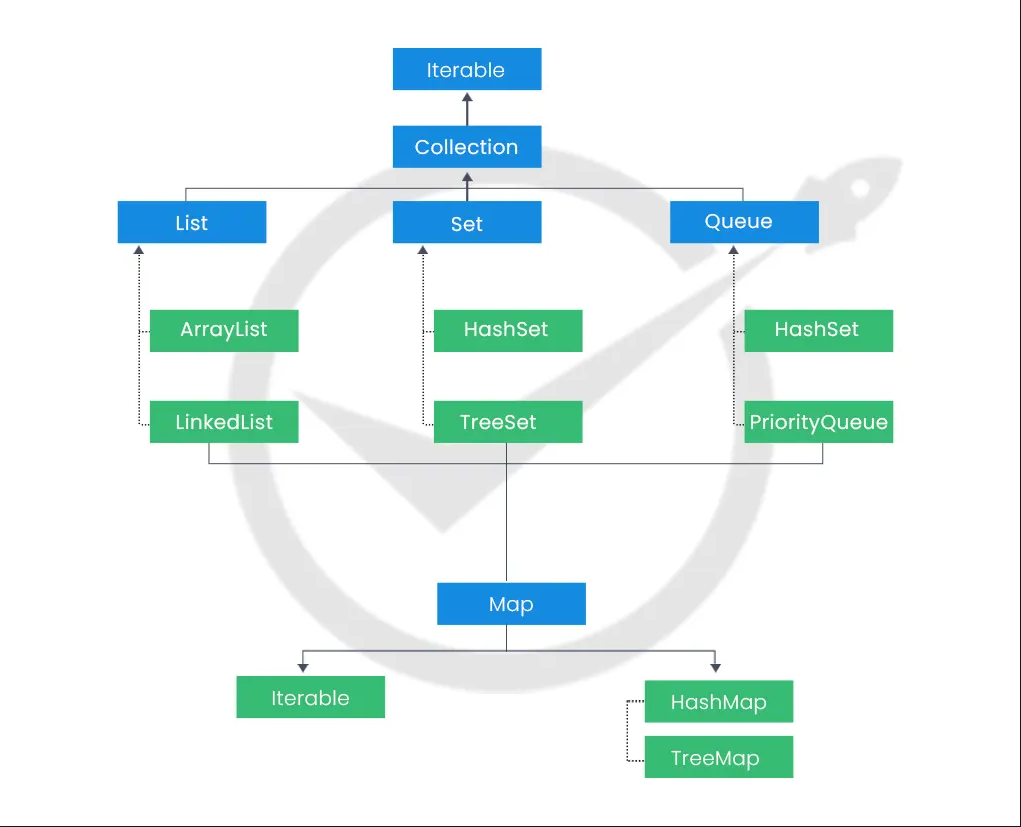If you are planning to give a DevOps interview in 2025 then this blog is for you
It does not matter if you are new to DevOps or already working for 2 years or 3 years or even 5 years
This blog will help you in every stage of your DevOps journey
In the world of technology DevOps is becoming more and more important with each year
It is not just about using tools or writing code
DevOps means how developers and operations teams work together in a smooth way
DevOps helps companies to create software very fast
It also helps to fix problems quickly when something goes wrong
DevOps focuses on three things
It wants the software to be fast
It wants the quality of the software to be good
And it wants the teams to work together like one strong team
When you go for a DevOps interview the company will not only ask if you know tools like Git Docker Jenkins and Kubernetes
They will also check if you really understand what DevOps means
They want to know if you can work with people from other teams
They want to see if you can solve real life problems that happen in the company
And they also want to know if you are always ready to learn new things
This blog will give you a complete list of the most important DevOps questions and answers
These questions are asked often in interviews
The list has questions for freshers
It has questions for people who have some experience
And it also has questions for experts
So no matter if you are just starting or you are already working in DevOps
This blog will help you get ready for your interview
It will help you feel more confident and prepared
Let us begin
DevOps Interview Questions and Answers for Freshers
If you are new to the tech world and preparing for your first DevOps interview then understanding the basics of DevOps is very important. Below are some common DevOps interview questions for freshers with simple and clear answers.
-
What is DevOps
Answer: DevOps is made by joining two words Development and Operations
DevOps means that software developers and IT operations teams work as one team. They do not work separately. The main aim is to build software faster test it properly and release it to users without any major problems or long delays
But DevOps is not only about using tools or technology. It is more about a way of thinking. It is about how teams work together in a better way. It focuses on three main ideas
Continuous Improvement – This means always trying to improve how things work and become better day by day
Team Collaboration – This means that developers testers and system admins all work as one team and help each other
Automation – This means using tools to do tasks like testing and sending updates without doing them by hand
In DevOps all teams help in every step from writing the code to giving it to the users. This reduces delays and makes the software better in quality
Also read: Top 10 DevOps Tools in India for 2025
-
What are the key benefits of DevOps
Answer: DevOps gives many good results for both the company and the team. Here are the main benefits explained in very simple words
Faster Time to Market – DevOps helps teams to send software updates faster. Since tasks like building testing and sending are done automatically there is no need to wait or do much by hand. This helps to send new features and fixes to users very quickly
Better Teamwork and Communication – DevOps removes the wall between the developers and the operations teams. Everyone shares ideas and feedback quickly. This helps the team to work better and solve problems faster
DevOps also helps teams to send software many times in a day. They do not need to wait for weeks or months. This helps to give users new features and fix bugs more often
Higher Quality and Reliability – DevOps uses automatic tests, code checks and monitoring. These help in finding mistakes early. This makes the software better and lowers the chance of it breaking when people use it
Fewer Problems in New Updates – In DevOps the updates are small and tested well. The team checks every update fully. This means new versions of the software are less likely to cause problems compared to the old way
Faster Fixing Time – If there is any problem in the live software the DevOps team can fix it quickly or go back to the last good version. This helps to reduce the time the software does not work and keeps the users happy
3. What are the key parts of DevOps
Answer DevOps is not just about using tools. It is a full way of working that helps teams make software faster and better. Below are the main parts that make DevOps strong and useful:
Continuous Integration or CI
This means that many developers add their code to one shared place many times in a single day. This shared place is usually a tool like Git. Every time a developer adds code the system checks the code by running tests on its own. These tests help to find mistakes early before they become big problems. Continuous Integration makes sure that all the code from different people works well together without any issues.
Continuous Delivery or CD
After the code is tested using CI the next step is to prepare it for users. This step is called Continuous Delivery. It helps to send the software to users quickly and safely. With CD teams can give updates more often without breaking the old system. It makes the process smooth and fast.
Infrastructure as Code or IaC
Before DevOps people had to set up servers using their hands. This took a lot of time and there were many chances for mistakes. But now we use IaC. It means we write scripts to do this work. These scripts are like step by step instructions written in code. IaC saves time and makes sure everything is done correctly every time.
Monitoring and Logging
After the software is used by real users we must check if it is working properly. This checking is called monitoring. It helps us know if something is wrong. Logging means saving records of everything that happens in the system like actions and errors. These records help us find and fix problems quickly.
Automated Testing
Testing means checking if the software is working as it should. In DevOps we use tools to test the software without needing people to do it. This is called automated testing. It saves time and keeps the quality high. These tests are fast and can catch mistakes that humans might not see.
Collaboration and Communication
DevOps is not only about computers and tools. It is also about people working together. Developers, testers and operations teams all work as one team. They share ideas and help each other. This teamwork helps to build better software and also grows trust among the people in the team.
-
What is Continuous Integration or CI
Answer: Continuous Integration is a simple idea in DevOps but it is very useful. Imagine that many people are working on the same software. If each person writes code alone and joins it later it can lead to many errors.
To fix this problem in CI all developers add their code to one common place many times in a day. This place is called a repository. After they add the code the system checks the code using tests and builds. These checks happen by themselves without any manual work.
Benefits of CI:
- It helps find mistakes early
- It makes sure all the code works well together
- It saves time when we do the final testing
-
Name some popular DevOps tools you’ve worked with or know about.
Answer: DevOps uses many helpful tools. Here are some of the most popular ones and what they are used for:
| Tool | What it does |
| Jenkins | Automates testing and deployment (CI/CD) |
| Git | Helps manage code and track changes (version control) |
| Docker | Puts applications in small, portable containers |
| Kubernetes | Manages and runs many containers on many machines |
| Ansible / Terraform | Helps set up infrastructure automatically |
| Prometheus & Grafana | Used for monitoring system health and showing it in dashboards |
| Selenium | Automatically tests web applications |
Each of these tools helps DevOps teams work faster, smarter, and more safely.
DevOps Interview Questions for 2–3 Years of Experience (With Simple Answers)
When you work in DevOps for 2 to 3 years the interview questions change. Now the questions are not just about the basics. They relate to practical work knowledge. This includes your understanding of automation deployment and how to manage servers. Below are some common questions and very easy answers that will help you get ready.
-
How is DevOps different from Agile
Answer: Agile and DevOps are two different ways to make software. They help in different parts of the software journey.
Agile is used when you are building the software. It means making the software in small steps. These small steps are called sprints. A sprint is a short time when the team builds one small part of the software. After every sprint the team checks what they made and improves it based on what users say. So Agile focuses on teamwork and user feedback.
DevOps starts after the software is built. DevOps is about testing launching and managing the software. It helps the team to send the software to users faster. It also makes the process automatic and reliable. In DevOps both the developer team and the operations team work together. The goal is to keep the software running well without problems.
So in short
Agile helps you build the right thing
DevOps helps you deliver it the right way
-
What is Infrastructure as Code (IaC)
Answer: Infrastructure as Code or IaC is a smart way to set up computers, servers and other tools using code.
In simple words normally people click buttons to create servers or databases. But with IaC you do not click buttons. You write code to create those servers. This code is saved in files like a recipe. You can use it again and again. You can also share it with your team or change it easily.
IaC helps because when people do things by hand they can make mistakes. But code does not make mistakes if it is written correctly. So IaC saves time, reduces errors and makes your work faster and easier to repeat.
Some popular tools used in IaC are
- Terraform used for setting up cloud services
- Ansible used for managing server settings
- CloudFormation used in AWS to manage resources
IaC makes it easy to build, change or remove your IT setup in minutes using simple scripts.
-
Blue Green Deployment is a clever method for launching new software without downtime.
Answer: It also reduces the chance of failure.
Here is how it works You create two environments that are exactly the same
- Blue is the one that users are using now
- Green is the one where you put the new version of the software and test it
You first launch the new version in the Green environment. After testing it if everything works well you switch all users from Blue to Green. This change is instant.
If something breaks you can switch users back to Blue.
This method keeps users happy because there is no break in service. It also makes it easy to go back if something goes wrong.
9. What is a Canary Deployment?
Answer: Canary deployment is a safe way to release a new version of an app.
- In this method the new version is first given to a small group of users. These users are called the canary group. They start using the new version before anyone else.
- If the new version works well and there are no major problems then more and more users slowly start getting the new version.
- This way the team can see how the system is working. They can check if the app is fast and if there are any bugs. If there is a big problem they can quickly stop the update and go back to the old version.
- This idea comes from coal mines. In the old days miners sent a canary bird into the mine. If the bird was safe then the miners knew it was okay to enter.
- In the same way canary deployment is like a warning system. It is very helpful when you are running big apps on many servers. If something goes wrong in a big update it can affect many people. So canary deployment helps to reduce that risk.
10. How does Docker help in DevOps?
Answer: Docker is a tool that puts your app into a small box called a container. This container has everything the app needs to run. It makes sure the app works the same everywhere.
Here is how Docker helps in DevOps:
- Same everywhere Developers use Docker to make one image of the app with all the tools and settings it needs. This image can be used in testing staging and production. It works the same in all places.
- Easy to deploy Because the app runs inside the container it does not matter what the computer system is like. This makes deployment very easy and fast.
- Easy to scale If you need more users to use your app you can create more containers. Docker works well with tools like Kubernetes to do this.
- Fast testing and CI/CD Docker containers start fast and stop fast. So developers can test quickly and fix problems faster. It also helps in CI CD pipelines where apps are tested and updated regularly.
- In short Docker helps make apps easy to move, easy to run and quick to test. It is a very important tool in DevOps.
DevOps Interview Questions for 5+ Years of Experience (Explained Simply)
With over 5 years in DevOps, the questions get tougher.
Interviewers want to find out how you deal with big systems and solve issues without halting work. Below is a very common question and its simple answer.
11. How do you ensure high availability in a DevOps pipeline?
Answer: High availability means your app should always work. Even if there is a problem the app should not stop.
Here is how we can do that:
- Use load balancers A load balancer is a tool that sends users to working servers. If one server stops the load balancer sends the user to another server that is working.
- Use more than one zone You can run your app in different places like in different cities or countries. If one place has a problem the app will still work from another place.
- Use Kubernetes with many copies. Kubernetes can run many copies of your app. If one copy fails another one will work. This way users will not face any problem.
- Use backup systems You can set up systems that switch to backup if the main one stops working. This is called failover.
- Use monitoring tools Tools like Prometheus and Grafana watch your system. If something is wrong they will tell you quickly. You can fix the issue before your users even know about it.
12. Kubernetes is essential in DevOps.
Answer: It manages containers, making it easier to deploy, scale, and operate applications. Containers are like small boxes that hold your app. Each part of the app can run in its own container.
Kubernetes is very smart. It helps DevOps teams run apps without doing hard work again and again.
Here is what Kubernetes does
It runs your app containers automatically
If more users come it adds more containers to handle the extra work
If one container breaks Kubernetes replaces it with a new one
If a new version has a problem it can go back to the old version quickly
Kubernetes makes life easier for DevOps teams. It saves time and helps keep apps running smoothly all the time.
13. How do you handle secrets in a DevOps workflow?
Answer: Secrets are private information.
These include passwords, API keys and special tokens. You must not write them in your code or store them in open text.
Instead you should use safe tools to protect secrets. Some popular tools are
HashiCorp Vault
AWS Secrets Manager
Azure Key Vault
Kubernetes Secrets
These tools help you in many ways
They keep secrets safe using encryption or locking
Only people or apps with permission can use them
They protect your system from hackers and attackers
Keeping secrets safe is very important in DevOps. If secrets are leaked your system can be in danger.
14. How would you implement CI CD in a microservices environment?
Answer: CI CD means Continuous Integration and Continuous Delivery. This is a way to write, test and release code quickly and safely.
In microservices your app is made of many small services. Each service works on its own. That makes CI CD a bit harder but it can be done.
Here is how to do it
- Create separate pipelines.
- Each microservice should have its own pipeline for building, testing, and deploying.
Use Docker and Kubernetes These tools help put each microservice in a container and run them well
Add service discovery This helps microservices find each other and talk to each other
Use versioning Every change should get a version number. This helps old versions work while new ones are being tested
Include all stages Your pipeline should have steps for building, testing and deploying. This makes sure nothing breaks
This method keeps your app working and helps you move fast without making mistakes.
15. In a DevOps setup, incident management is all about fixing problems quickly.
Answer: An incident is when something doesn't work right. For example your app stops or a server crashes. A good DevOps team handles incidents quickly and learns from them.
Here is how to manage incidents
Use monitoring tools Tools like Prometheus Grafana and PagerDuty tell you when something is wrong
Use runbooks and playbooks These are step by step guides that show what to do during an emergency
Do blameless postmortems After fixing the problem the team talks about what went wrong. No one is blamed. The goal is to learn and improve
Learn and improve. After the incident, enhance your system to prevent the same issue from happening again.
Automate small fixes Set up tools that can fix small problems on their own. This saves time and keeps things running
Managing incidents well keeps your app running and makes your team strong and ready.
Bonus DevOps Interview Questions: Advanced and Behavioural
With 2 to 3 years of DevOps experience, expect more than just questions about tools.
You will be asked about how you work with teams, how you solve problems and how you track progress. These bonus questions will help you get ready.
16. What Metrics Would You Monitor in a CI CD Pipeline
Answer: In DevOps it is important to watch the right metrics. Metrics tell you how your pipeline is working. If you know what is going wrong you can fix it fast.
Here are some key metrics
Build Success or Failure Rate This shows how often your builds work or fail. If many builds fail it means there may be bugs or setup problems
Deployment Frequency This tells how often you release updates. High frequency means your team is confident and moving fast
Lead Time for Changes This is the time between writing code and putting it into production. Shorter time means your team is fast and efficient
Mean Time to Recovery or MTTR This tells how long it takes to fix something that breaks. A short MTTR is a good sign because your team can solve problems quickly
Change Failure Rate This is the number of updates that cause problems. A low rate means your updates are safe and stable
Why It Matters These metrics help you see how fast, safe and smooth your pipeline is. They show where you are doing well and where you need to improve.
17. How Do You Reduce Deployment Risk
Answer: Every time you release new code something might break. But there are good ways to stop this from happening. These steps help you release updates safely.
Automated Testing at Every Stage Run tests automatically after every change in code. These tests include unit test integration test and end to end test. This helps find problems early before they become big.
Canary or Blue Green Deployments In Canary deployment you first give the new update to a small group of users. If it works well you then give it to more users. In Blue Green deployment you keep two same environments. One is live and one is for testing. You switch between them to check if everything works.
Rollback Strategies Always keep a plan to go back to the old version if something goes wrong. You can use Git tags or saved versions called snapshots to do this.
Infrastructure Monitoring Use tools like Prometheus Grafana or New Relic to check how your system is doing. These tools watch things like speed, error rate and CPU usage after you update the system.
Feature Flags Use feature flags to turn new features on or off without changing the code. This is a safe way to test things with real users without risk.
The goal Keep users safe from bugs Catch problems early Always have a backup plan ready
18. Describe a Challenge You Faced in a DevOps Project and How You Solved It
Answer: This is a question about your real experience. Here is a simple example that shows how to answer such questions.
“In one project our staging area was not working properly. Every developer had set it up in a different way. Because of this the system kept breaking. It delayed testing and release.
To solve the problem I used Docker. With Docker we made the same environment for everyone. I also used Jenkins to make a pipeline that built and deployed the app automatically. After doing this we had fewer errors. The work became smoother and faster.”
Pro Tip Use the STAR method S for Situation T for Task A for Action R for Result
This method helps you give clear answers in interviews.
19. How Do You Promote a DevOps Culture Within a Team
Answer: DevOps is not only about tools. It is also about people working together as one team. Developers, testers and operations people should help each other. This is called DevOps culture.
Here is how to build it
Encourage Collaboration Between Dev and Ops Teams Remove the wall between teams. Set up joint meetings, share the same dashboards and create open chat channels for quick talks.
Use Shared KPIs or Success Goals Make all teams care about things like uptime speed and bug fixes. When goals are shared everyone works together better.
Automate Repetitive Tasks Use tools to do boring jobs like testing, deploying or setting up systems. This saves time and lets people focus on important work.
Share Knowledge Regularly Write down important steps. Run small talks inside the team. Help each other learn new things.
Why This Matters When all team members care about results like app speed and uptime they work better as one team.
20. How Do You Stay Updated with New DevOps Trends
Answer: DevOps keeps changing fast. New tools, new ideas and new ways come all the time. If you want to grow in DevOps you must keep learning.
Here is how to stay updated
Follow Reputable Blogs Read blogs like DevOps dot com DZone The Utho Blog and others. These blogs share new ideas and tools.
Subscribe to Newsletters Sign up for weekly emails like DevOps Weekly or GitHub Changelog. They send news and updates to your inbox.
Join Online Communities Talk to other DevOps people in Reddit GitHub DevOps Slack or LinkedIn groups. You can learn a lot by sharing ideas.
Take Online Courses and Attend Webinars Use websites like Udemy Coursera and KodeKloud. They have courses on topics like Kubernetes CI CD and Terraform.
Pro Tip The more you read and learn the better you become at solving real problems.
Final Thoughts In 2025 DevOps interviews are not just about knowing tools.
They are about how well you understand the full process. They test how you solve real problems and how you work with others.
Whether you are trying for your first DevOps job or moving to a bigger role these questions help you
Show your real experience clearly
Explain why tools are used and not just how
Prove that you can learn grow and work with a team
Remember DevOps is not just a job title. It is a journey. It is about always learning to talk openly and using tools to solve problems faster. If you follow this path you will not only pass interviews you will do great in your DevOps career.
Also read: Java Interview Questions





















